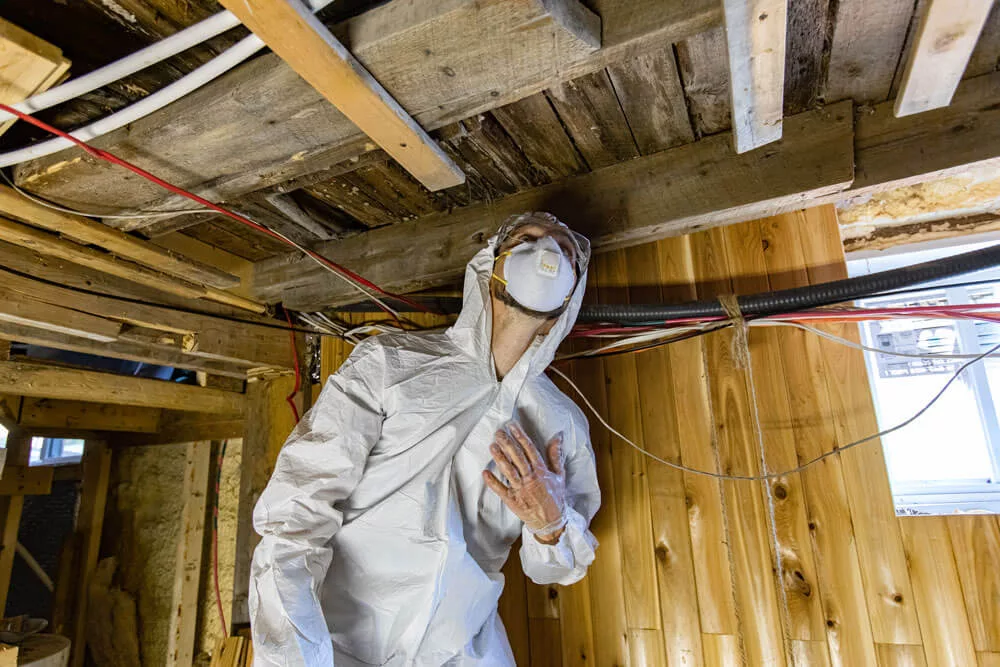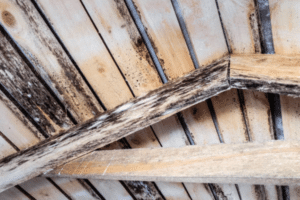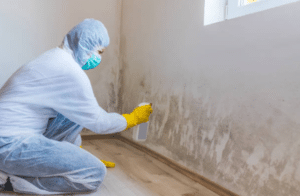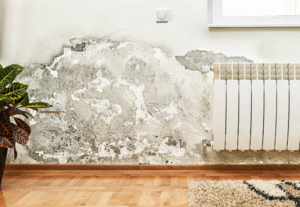Airborne mould spores have a handful of tricks to get into your home, be it by travelling through windows, open doors or even on your clothes. Soon enough, under the right conditions mould can take root and lead to a rather nasty headache down the line.
These mould growths can turn a lovely home into a place of dread, posing a significant health risk to its inhabitants. Let’s take a look at what mould is, as well as what you can do to get rid of mould spores from the air.
What is mould?
Firstly, what exactly is mould? Mould is a naturally occurring fungus, one that propagates through spores under the right conditions. Unfortunately for us, mould is present almost everywhere, both outside and inside. As such, it can quickly make its way into your home.
Heat, humidity, and a lack of sunlight are the perfect conditions for mould to grow once inside the home. Common areas for mould growth include bathrooms, basements, within walls, as well as other areas where there is high humidity.
Can you get sick from mould spores in the air?
Left to its own devices, mould can have a huge impact on the quality of air inside your property, potentially leading to a number of health conditions. Mould produces mycotoxins, a toxic substance that can drastically impact our health. Here is a short list of a few health issues the presence of mould can lead to:
- Skin irritation
- Sinusitis
- Lung infections
- Inflammation of the throat
- Sneezing
- Red eyes
- Headaches
Those who suffer from respiratory conditions such as asthma or have a compromised immune system can be particularly affected by the spores produced by mould. As such, it’s important to take action as soon as the presence of mould has been detected.
If you are experiencing a serious case of black mould, then we recommend getting in touch with a cleaning professional as soon as possible. Large patches of mould can be indicative of a bigger issue, as such it’s well worth arranging expert mould spore removal to tackle the issue at its root.
How long do mould spores stay in the air?
When it comes to how long mould spores can remain in the air, the answer may surprise you. Mould can remain airborne for an indefinite period of time, so it’s vital that mould is swiftly detected and removed from your indoor space before it can establish itself.
Mould can also remain dormant within your space, waiting for the right conditions to spread. Activity within the room can stir up existing mould particles into the air, potentially leading to visible health symptoms.
What are some symptoms of mould spore exposure?
If you’ve been living or working in an area that has a mould issue, you may experience a number of symptoms directly related to it. The symptoms can appear mild at first, however with consistent exposure to mould they can develop to become more severe.
Symptoms can include consistent coughing, sneezing, itchy eyes or throat, headaches, as well as nasal congestion. The severity of these symptoms can increase over time.
Children and the elderly can be particularly affected by mould spore exposure, so it’s important to keep mould in check in order to protect the health of those living in the home.
How to get rid of mould spores from the air
- Health issues caused by mould
- Mould area greater than 1 meter squared
- Recurring mould growth
- Mould in multiple areas
- Pregnant or have small children
- Respiratory issues like asthma
So, you’ve decided it’s time to tackle that black mould that has been slowly spreading in the corner of your bathroom, or perhaps you have a patch in your basement that you’ve been turning a blind eye to. Fret not, as the following is a short list of 5 ways to get rid of mould spores from the air:
- Utilise an air purifier
One of the most common ways to remove mould spores is by using an air purifier with a dedicated HEPA filter. These filters can effectively trap mould spores before they become an issue, however these do require upfront as well as ongoing maintenance costs.
- Keep your space well-ventilated
Another less costly way of mould removal is to ensure your space is adequately ventilated as well as reducing average humidity. This can be as simple as opening a window after enjoying a hot shower.
- Maintain your air conditioner
If you are lucky enough to have an air conditioner in your home, make sure that it is properly maintained as per your instruction manual. A build-up of dust and other particles can affect an air conditioner’s level of performance over time, reducing ventilation and thus, leading to the spread of mould.
- Keep your eyes peeled for leaks
One of the prerequisites for mould growth is the presence of humidity. A leaky pipe in a basement, for example, can add to the humidity of the room until conditions are just right for mould to grow.
- Have a regular cleaning routine
We already know that mould can lay dormant inside a home, waiting for the conditions to be right. One popular place for mould to collect is on walls and carpets. Therefore, it’s a good idea to regularly vacuum and clean surfaces to tackle these spores before they can take root.
Wrapping up:
With mould being an ever-present part of daily life, it’s important to take preventative steps to keep it under control. With a little bit of effort and some extra know-how, you’ll be well on your way from turning black mould into a distant memory.
If you do find you are struggling with mould within your home, then we recommend considering hiring a professional cleaning company to assess the situation.
Home remedies can be effective for small patches of mould, however if you find this mould returning with alarming speed, this may be an indication of a larger problem.
Mould removal specialists will be able to locate the source of your issue and present you with the solutions required to rectify it. Left unchecked, mould can cause substantial damage to your home, so it can be well worth the investment to prevent future costs.




